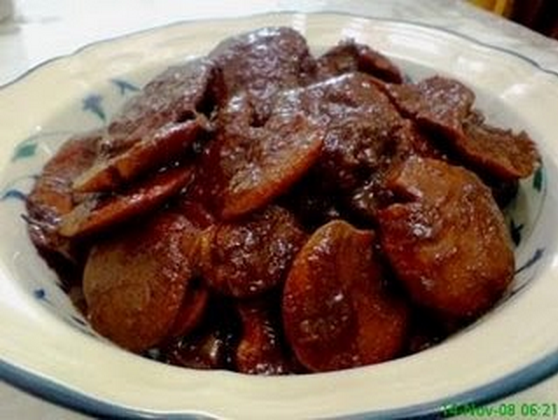
Jengkol is native to tropical plants in Southeast Asia. In addition to Indonesia, jengkol grows in Malaysia under the name (jering / jiring), in Thailand (cha niang), while Myanmar (danyin), and Nepal (dhinyindi).
Census of the people of Nusantara consuming jengkol has happened since long. Lieutenant Governor of the Dutch East Indies, Thomas Stamford Raffles in The History of Java (1817), mentioned jengkol as a foodstuff in Java, in addition to petai and komlandingan (lamtoro).
Karel Heyne, as Dutch botanist, also mentions the jengkol problem in his work, published in 1913, De nuttige palnten van Nederlandsch Indie, in his work containing widely used and commercially valuable herbs in the Dutch East Indies. In a later book published by the Ministry of Forestry under the title 'Indonesian Useful Plants' (1988), Karel Heyne writes

jengkol with a height of up to 26 meters growing in the western part of the archipelago, cultivated in the island of Java or grow wild in some areas. Jengkol can grow well in areas with moderate to severe drought, but can not stand the long dry season. The German botanist Justus Karl Hasskarl, as quoted by Karel Heyne, argued that according to European judgment the seeds of jengkol do not taste good, but the residents are happy with these jengkol beans.
Like other authors, Justus Karl Hasskarl mentions that jurol consuming pleasure can lead to ulcers and diseases kajengkolan (difficult and painful when urinating).
Doctor and scientist from the Netherlands, AG Vorderman, gave a description of jengkol: "Its seeds in addition to many carbohydrates (Zetmeel) contain also essential oils, if people eat these jengkol seeds can cause poisoning, can cause kidney hyperaemie or renal bleeding and can lead to reduction or cessation of urine discharge and bladder spasms (Blaaskrampen). "
According to AG Vorderman, in the city of Bogor has jengkol with the name jengkol beweh. Jengkol beweh has an adverse nature in the city of Bogor called jengkol lonely. "Jengkol beweh is an old seed that is planted in the soil for 14 days until it begins to germinate," Vorderman said, as quoted by Karel Heyne.
According to Karel Heyne, the description is not appropriate because the purpose of planting old jengkol seeds is precisely to reduce the properties of harmful jengkol seeds. The detrimental properties of jengkol seeds can also be reduced by being processed into jengkol chips. How: jengkol seeds that have been boiled old, beaten the hammer to thin, then dried in the sun. After that fried with a little extra salt. "Thus it can be explained that the way it will reduce the danger because its essential oil will evaporate as a result of this processing," wrote Karel Heyne.
Preparations from the most popular jengkol in the Betawi tribe are jengkol stew. The trick is usually the same as making jengkol chips. Regarding why semur jengkol finally become a special culinary Betawi tribe. Because first, almost in every home garden Betawi people must be found jengkol. Jengkol become delicious ingredients of cheap price. Thus the Betawi people prefer to use jengkol, tahu, tempe as raw material of stew instead of meat which in fact is more expensive. Semur Jengkol then adheres to the traditions typical of the Betawi tribe, and became the favorite menu of every family in the Betawi tribe, especially the city of Jakarta.
Variation of Semur Jengkol.
- Semur Jengkol spicy Dry
- Semur Jengkol sauce
- Semur Jengkol sauce spicy